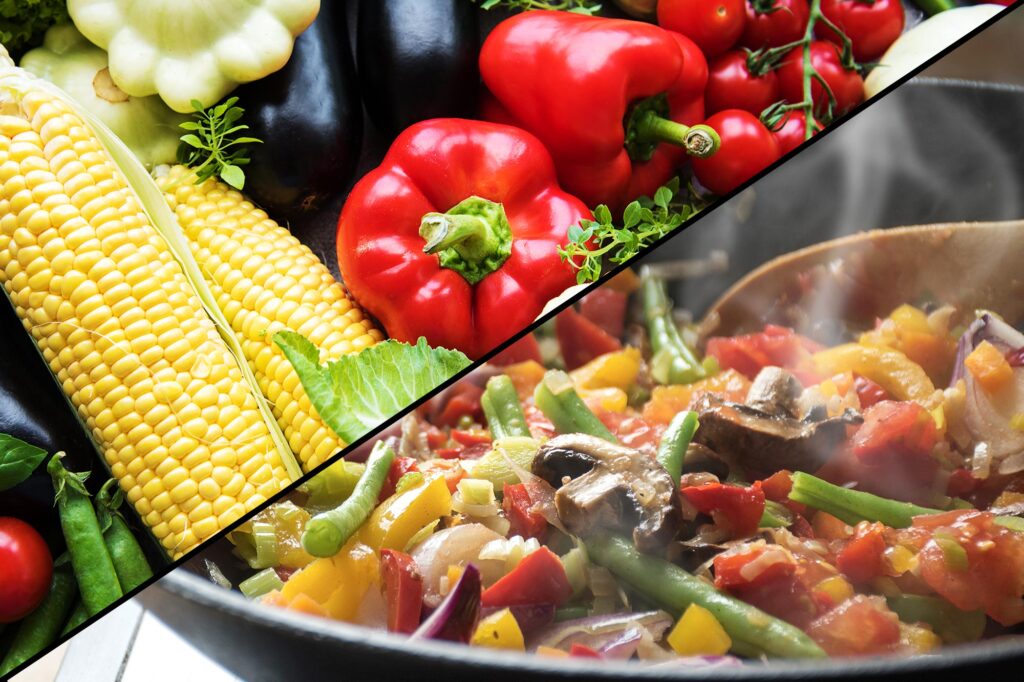Raw vs. Cooked: Exploring the Nutritional and Culinary Debate
by siteadmin

The debate between raw and cooked foods has been ongoing for centuries, with proponents on both sides passionately advocating for their preferred method of food preparation. Raw food enthusiasts argue that consuming foods in their natural state preserves vital nutrients and enzymes, while proponents of cooked foods contend that cooking enhances flavors, makes certain foods more digestible, and kills harmful bacteria. So, which side of the culinary coin reigns supreme? Let’s delve into the raw vs. cooked debate and explore the benefits and drawbacks of each.
The Case for Raw:
Raw food enthusiasts champion the consumption of uncooked, unprocessed foods, believing that they retain maximum nutritional value. Fruits, vegetables, nuts, and seeds are commonly consumed raw in salads, smoothies, and snacks. Advocates argue that heating foods above a certain temperature (typically around 118°F or 48°C) destroys essential enzymes and heat-sensitive nutrients, such as vitamin C and some B vitamins. Raw diets are often associated with increased energy levels, improved digestion, and enhanced overall health.
Additionally, proponents of raw foods argue that cooking can create harmful byproducts, such as advanced glycation end products (AGEs), which may contribute to inflammation and chronic diseases like diabetes and cardiovascular disease. By avoiding cooking, they believe they can minimize their exposure to these potentially harmful compounds.
The Case for Cooked:
On the other side of the spectrum, advocates for cooked foods argue that cooking enhances both the flavor and digestibility of many foods. Heat breaks down the cellular structure of plants, making nutrients more accessible to the body. For example, cooking tomatoes increases the bioavailability of lycopene, a powerful antioxidant linked to numerous health benefits, including reduced risk of heart disease and certain cancers.
Cooking also destroys harmful bacteria, parasites, and pathogens that may be present in raw foods, reducing the risk of foodborne illness. Moreover, the process of cooking can transform bland or tough ingredients into delicious and satisfying meals, expanding culinary possibilities and increasing enjoyment of food.
Finding Balance:
While both raw and cooked foods offer distinct advantages, the key to a healthy diet lies in balance and moderation. Incorporating a variety of both raw and cooked foods into your diet ensures that you reap the benefits of each while minimizing potential drawbacks.
For example, raw fruits and vegetables provide essential vitamins, minerals, and enzymes that support overall health and vitality. Meanwhile, cooked foods offer enhanced flavors, improved digestibility, and a wider range of culinary options.
Experimenting with different cooking methods, such as steaming, roasting, or sautéing, can help preserve nutrients while enhancing taste and texture. Additionally, combining raw and cooked ingredients in meals, such as hearty salads or vegetable stir-fries, can provide a balanced and satisfying dining experience.
In the raw vs. cooked debate, there is no one-size-fits-all answer. Both methods of food preparation offer unique benefits, and the ideal approach may vary depending on individual preferences, dietary restrictions, and health goals. By embracing a diverse range of foods and cooking techniques, you can enjoy the best of both worlds and support your overall health and well-being. Whether you prefer a crisp, refreshing salad or a warm, comforting stew, there’s room for both raw and cooked foods in a balanced diet.
The debate between raw and cooked foods has been ongoing for centuries, with proponents on both sides passionately advocating for their preferred method of food preparation. Raw food enthusiasts argue that consuming foods in their natural state preserves vital nutrients and enzymes, while proponents of cooked foods contend that cooking enhances flavors, makes certain foods…
Recent Posts
- Exploring the Culinary Revolution of Air Fryers: Healthier Cooking Made Easy
- Unleashing Culinary Creativity: The High-Powered Blender Revolution
- Raw vs. Cooked: Exploring the Nutritional and Culinary Debate
- Unveiling the Power of Nutrition: Fueling Your Body, Energizing Your Life
- Revolutionize Your Kitchen: A Guide to Must-Have Appliances
